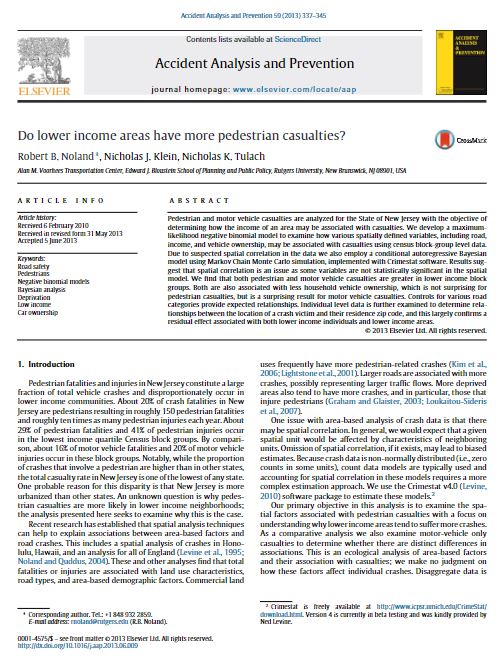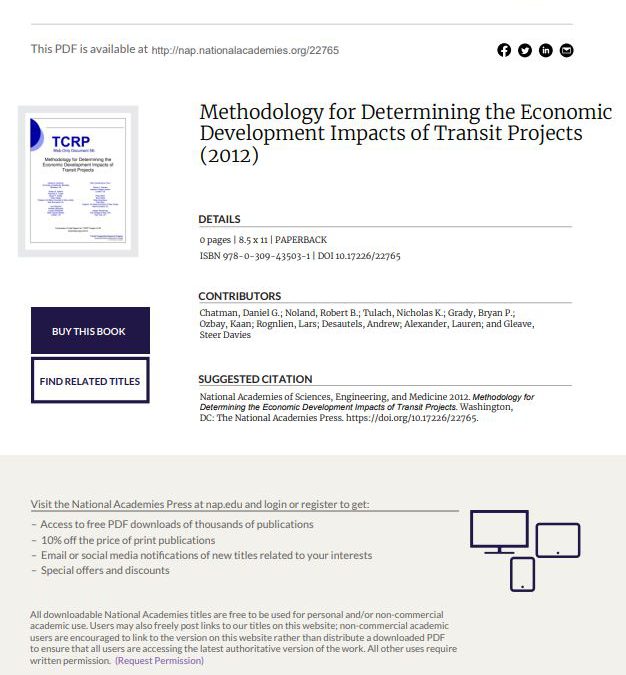Pedestrian and motor vehicle casualties are analyzed for the State of New Jersey with the objective of determining how the income of an area may be associated with casualties.


Pedestrian and motor vehicle casualties are analyzed for the State of New Jersey with the objective of determining how the income of an area may be associated with casualties.

TRB’s Transit Cooperative Research Program (TCRP) Web-Only Document 56: Methodology for Determining the Economic Development Impacts of Transit Projects explores development of a method for transit agencies to assess whether and under what circumstances transit investments have economic benefits that are in addition to land development stimulated by travel time savings.
Objective While fatal crashes are available through the Fatality Analysis Reporting System (FARS) and are readily available to the public, many states do not make their crash data easily accessible for the public and the research community. The public has an interest...
Through this research, NJ TRANSIT sought to understand how women and members of the lesbian, gay, bisexual, transgender, queer plus community, sometimes referred to as sexual and gender minorities (SGMs) travel on NJ TRANSIT so the agency can provide better...
Recent advances in biometric sensing technologies, such as eye tracking, heart rate trackers, and galvanic skin response (GSR) sensors, offer new opportunities to measure pedestrian stress level and their travel experiences in real-time. Uncertainty remains about...
Background Increasing evidence positively links greenspace and physical activity (PA). However, most studies use measures of greenspace, such as satellite-based vegetation indices around the residence, which fail to capture ground-level views and day-to-day dynamic...